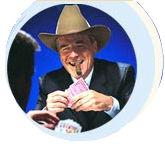The impulsive behavior that sometimes develops as a side effect of treatment
with “dopamine agonists” drugs may not be limited just to patients with
Parkinson’s disease. Patients with restless legs syndrome who are treated
with a drug belonging to this class may also be at increased risk for
pathologic gambling, according to a report in the medical journal Neurology.
Dopamine agonists are a class of drugs that contain agents commonly used to
treat Parkinson’s disease and restless legs syndrome, both neurological
disorders. Some of these drugs commonly used for one or both conditions
include Requip (generic name ropinirole), Mirapex (pramipexole) and Sinemet
(levodopa plus carbidopa).Dr. M. Tippmann-Peikert and colleagues from the
Mayo Clinic College of Medicine, Rochester, Minnesota, conducted a review of
the available medical literature, and found that the lifetime prevalence of
pathologic gambling in the general U.S. population is 1.93 percent. “A
similar or even higher frequency has been suggested in patients with
Parkinson’s disease treated with dopamine agonists,” they report in the
medical journal Neurology The researchers described the case history of
three patients — two middle-aged women and an older man — with restless
legs syndrome who became pathologic gamblers after treatment with dopamine
agonists began. Restless legs syndrome is a neurological disorder that
causes unpleasant sensations in the legs and an uncontrollable urge to move
to get relief. Patients have described the sensations as a burning or
creeping feeling, or like insects are crawling inside the legs. What
characterized the syndrome is that patients primarily develop symptoms when
they are trying to relax or sleep. None of the three patients had signs of
parkinsonism on neurologic examination, and none was aware of the possible
link between dopamine agonists and pathologic gambling reported for
Parkinson’s disease patients. One of the patients had never gambled before
starting dopamine agonist therapy, and the other two patients had just a
little past experience of recreational gambling. At the time gambling
commenced or worsened, the three patients were taking an average of 0.5
mg/day of pramipexole, and one other patients was on a daily dose of 0.25 mg
of ropinirole. The gambling behavior got worse with each dose increase. The
patients had been treated with dopamine agonists for an average 9.3 months
when the gambling compulsions began.
